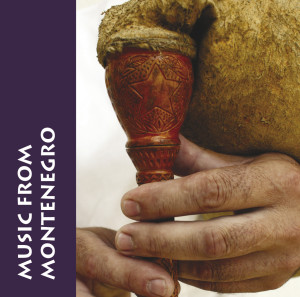 Music from Montenegro is a single-disc collection that showcases the variety of Montenegro’s folk music styles, with 28 tracks covering nearly 76 minutes. Variety is the key word here, and the musical variety echoes Montenegro’s ethnic and geographic diversity. With some 650,000 people in a fairly small country, Montenegro has both a Mediterranean coastline that resembles Greece’s and a harshly beautiful alpine region that borders on other countries from the former Yugoslavia.
Music from Montenegro is a single-disc collection that showcases the variety of Montenegro’s folk music styles, with 28 tracks covering nearly 76 minutes. Variety is the key word here, and the musical variety echoes Montenegro’s ethnic and geographic diversity. With some 650,000 people in a fairly small country, Montenegro has both a Mediterranean coastline that resembles Greece’s and a harshly beautiful alpine region that borders on other countries from the former Yugoslavia.
Some of the music here will sound familiar to Western ears, and in fact is almost a cliche — tracks that feature tanbura orchestras could have been cribbed from the soundtrack to Zorba the Greek. And some will sound familiar to fans of Serbian, Croatian and even Romanian music. But some is rough and wild and sounds like little else.
There’s lots of unaccompanied vocal music by men’s and women’s and mixed ensembles of various sizes. Some, like the opening two tracks, “Oj, devojko” and “Da mi se stvoriti pticom lastavicom,” are stately, professional-sounding performances. Others, like the humorous song “Sto ‘no sinoc vecerasmo,” and the dance song “Primorkinja konja jaše,” are more rough and boisterous. The former translates as “What did we have for dinner last night,” and the verses unfold and repeat rather like “The 12 days of Christmas” in a conjuring of abundance: one quail, two pigeons, three doves, all the way up to 10 melons. Other song types include a traditional lament for the death of a relative, and the iz glaza, a shouted, highly melismatic style in which the men sound as though they’re imitating a bleating goat.
The Montenegrans use a unique double-piped flute which shows up on a couple of tunes here, in addition to a goatskin bagpipe called the diple, which also appears in a couple of tunes. Of course there are lots of lutes, including the bowed gusle, used on an epic song at track 3; other kinds of flutes, and accordions. One of my favorite songs on the album is “A la turca,” which means “in the Turkish style,” played by a tambura-and-accordion band from Plav. Here you get some of the Ottoman and Arabic influence of the region.
The booklet explains each track and gives a photo of the performers. This is an excellent presentation of some vibrant and fascinating music that deserves more exposure. Fans of Balkan and Mediterranean music should check this one out at the Caprice Records website.
(Caprice, 2005)
